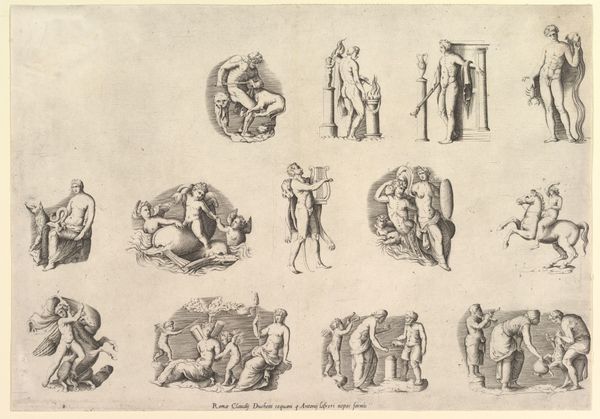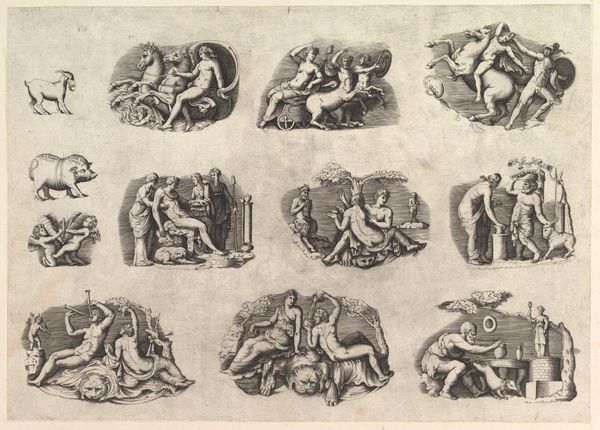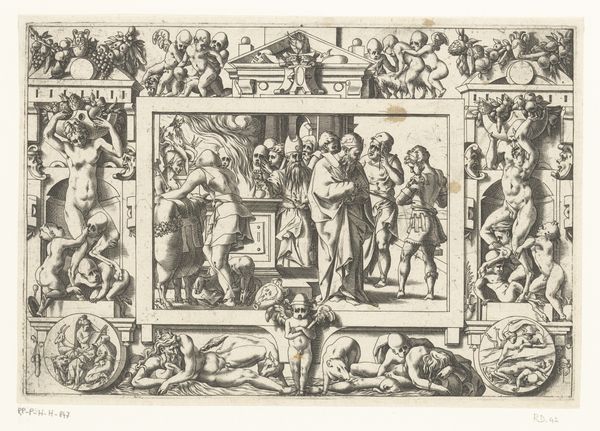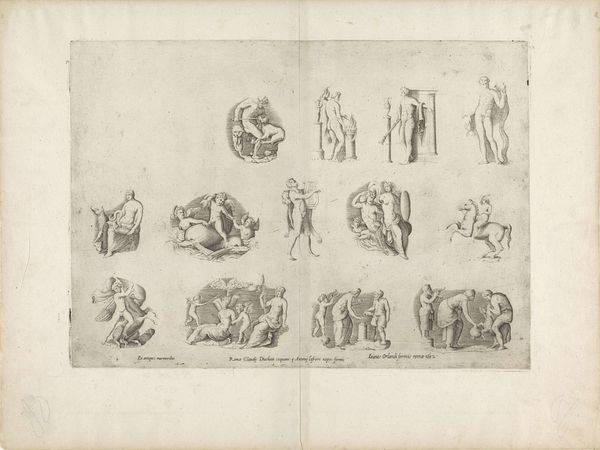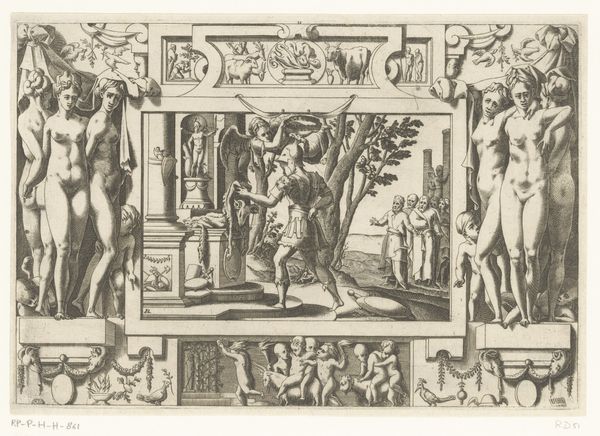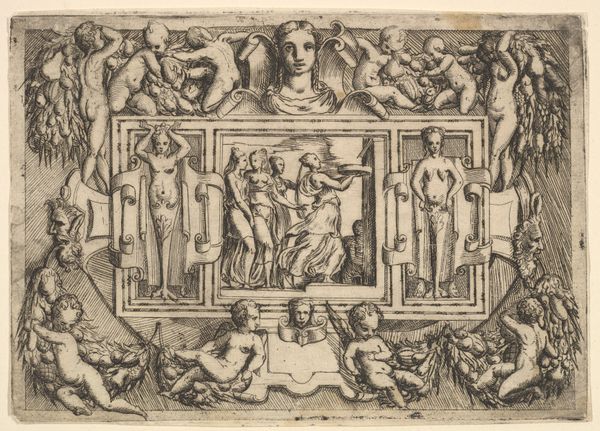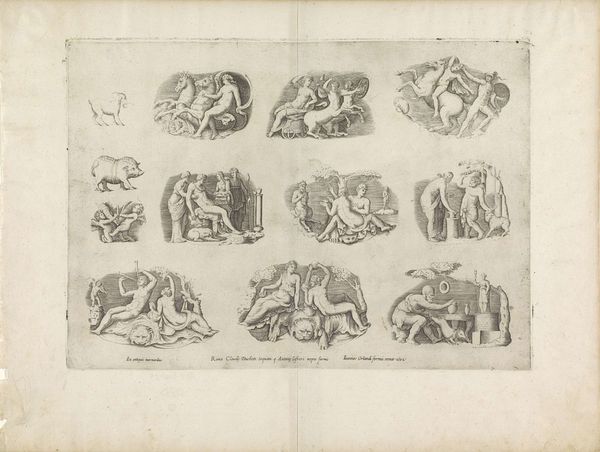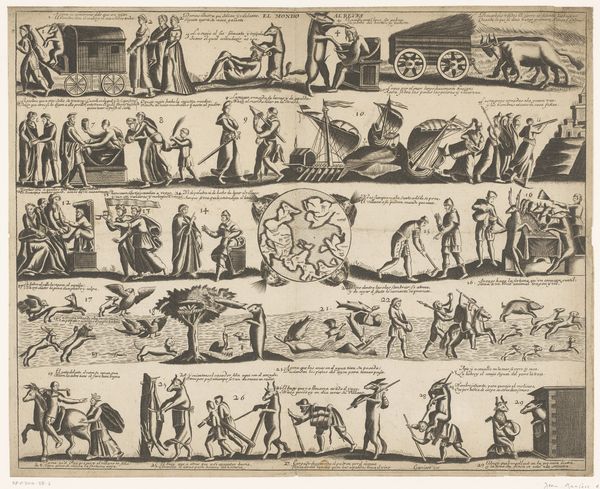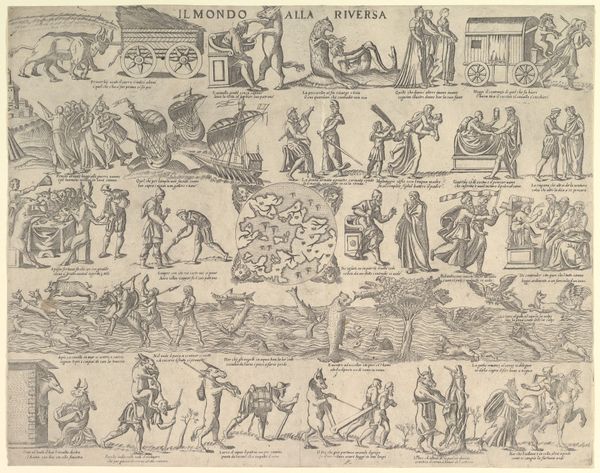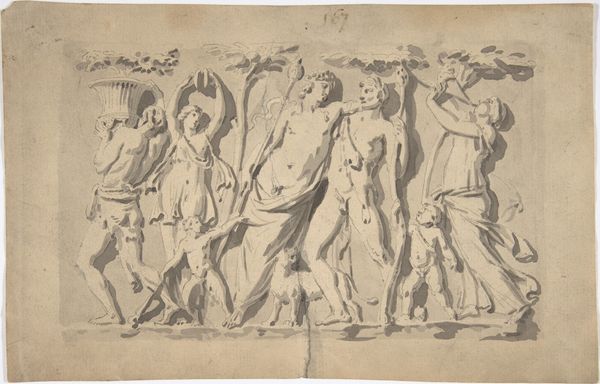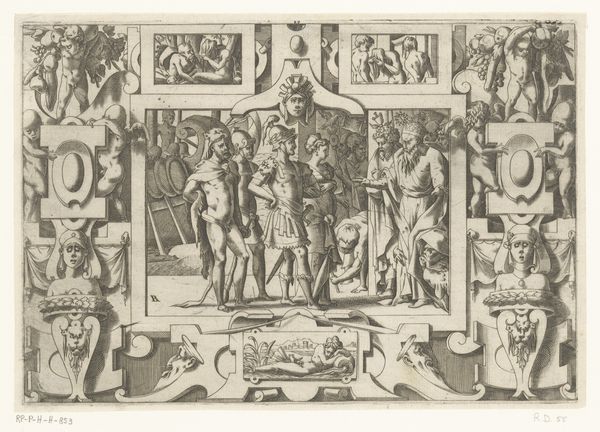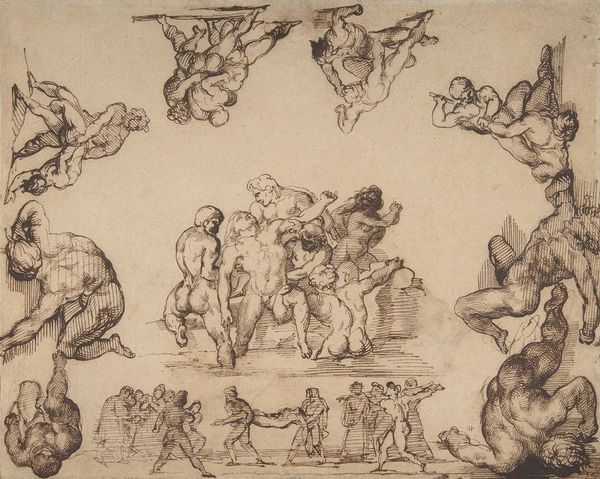
Speculum Romanae Magnificentiae: Subjects after Antique Cameos and Gems 1545 - 1582
0:00
0:00
drawing, print, engraving
#
drawing
#
face
# print
#
figuration
#
ancient-mediterranean
#
history-painting
#
italian-renaissance
#
nude
#
engraving
Copyright: Public Domain
Curator: Let's turn our attention to "Speculum Romanae Magnificentiae: Subjects after Antique Cameos and Gems," an engraving dating roughly from 1545 to 1582. Editor: It strikes me as a visual catalog—a collection of small, contained narratives. The density of figures gives it a very classical feel, doesn't it? A rather restrained, intellectual one, at that. Curator: Precisely. The print method employed enhances a reading of discrete units, yet look how each scene reinterprets established iconographic programs. The consistent, rhythmic engraving style allows for legibility across the varied scenes. Note, for instance, the recurrence of triumphal and sacrificial imagery. Editor: You're right; recurrent themes definitely emerge. There's a clear fascination with classical myths—nymphs, satyrs, gods. The narratives depicted seem deeply embedded in the collective consciousness of that time. These are all figures familiar in pose, proportion, and placement across cultures. I sense a deliberate attempt to capture the weight of the Roman Empire through its popular symbols. Curator: The engraving’s tonal range also reinforces the allusion to bas-relief sculpture. Notice the deliberate use of hatching to define form and create areas of shadow and light. In its adherence to proportion and its implied classical ideals, the entire print reflects Renaissance values, perhaps in dialogue with humanist theories about representation. Editor: Absolutely, one can see the Renaissance fascination with recovering and recasting the antique world; I think it reflects the time period and offers commentary through visual reference. Do you agree that there may be a social or political message regarding Italian power struggles encoded in that emphasis? Curator: An intriguing theory, I can't disagree, but beyond subject matter, its structure warrants study—how it encapsulates many images on one plane, how form dictates meaning and our interpretations as beholders of this printed scene. Editor: So, in the end, both image and process reflect the spirit of the age in an emblem or message. A visual study with much to tell!
Comments
No comments
Be the first to comment and join the conversation on the ultimate creative platform.
